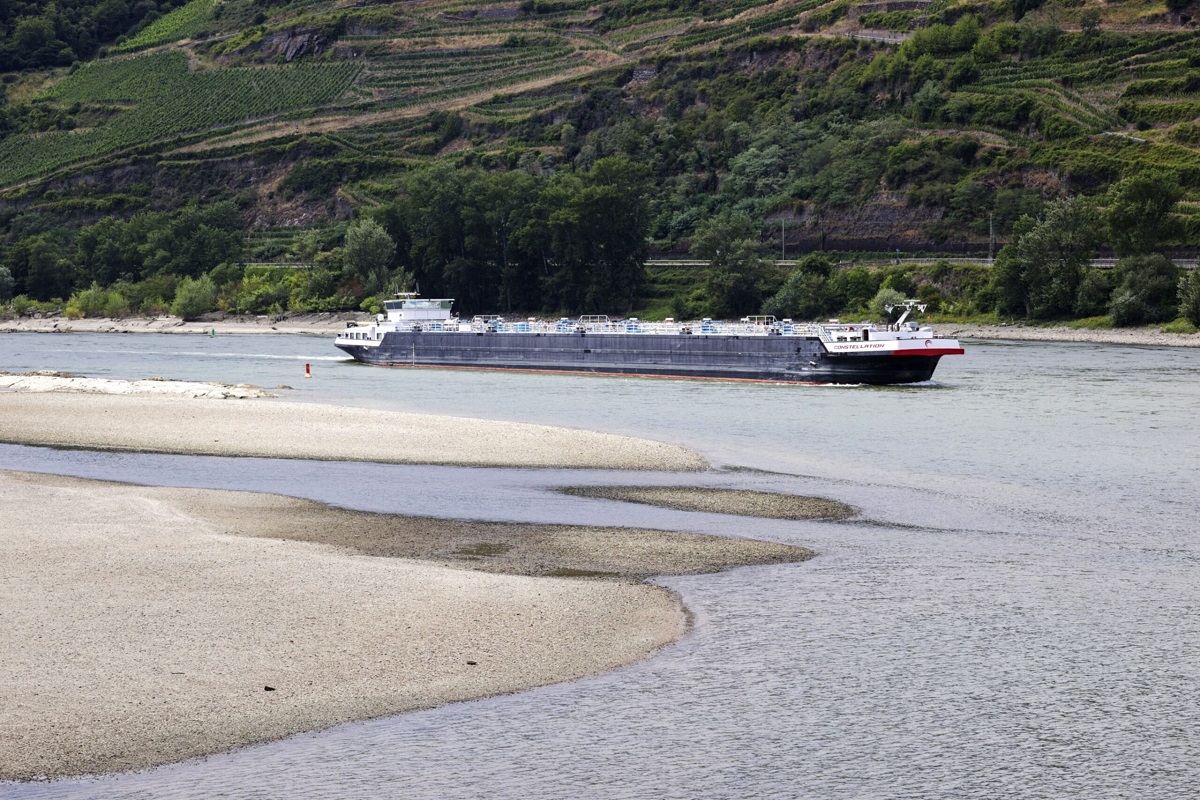- The Rhine River has dropped to “exceptionally low” levels in some areas.
- The drought could exacerbate an already dire situation for Germany’s economy.
- Low water levels in the River Rhine could adversely affect the German economy.
The river Rhine in Germany is drying up, disrupting supply chains and adding to the country’s economic woes.
German officials told CNN on Friday that the river has dropped to “exceptionally low” levels in some areas, disrupting shipping on the country’s most important inland waterway.
A lack of precipitation in recent months has led to cargo ships carrying lighter loads, soaring transportation costs, and heightened economic and power supply risks.
The Federal Institute of Hydrology in Germany issued a warning last month that water flows at the Kaub gauge, located west of Frankfurt, were already at 45% of average levels for this time of year. According to the agency, this caused “frequent obstructions” for ships.
The Rhine Waterways and Shipping Authority announced on Friday that water levels are expected to drop further before rising “very slightly” in the coming weeks.
The situation is reminiscent of 2018, when similar river issues halted freight shipping and slowed German economic growth by an estimated 0.2%, according to economists at Deutsche Bank.
increased costs
Despite the fact that this year’s water levels have not yet dropped to the same extent, “cargo ships already have to reduce the loading quantity,” they wrote in a report last week. Therefore, transportation costs increase.
In the Kaub gauge, for instance, water levels below 75 centimeters (29.5 inches) indicate that a large container ship “”has to reduce its upload to about 30%,” the economists said.
“There is also an increased levy in Germany to pay for cargo when water levels drop below a certain level,” UBS insurance analysts cautioned.
The drought could exacerbate an already dire situation for the largest economy in Europe, which is already threatened by a recession due to an energy crisis, high inflation, and supply chain bottlenecks.
Germany has recently resorted to igniting its coal-fired power plants to ensure continued access to electricity as Russia restricts gas supplies.
However, “much of the required hard coal is transported by barge along the Rhine from the Dutch ports of Amsterdam, Rotterdam, and Antwerp,” according to Deutsche Bank economists.
The falling water levels of the river, according to Henri Patricot, an oil analyst at UBS, “compromise shipments of energy products, thereby aggravating the commodity supply situation in Europe.” Additionally, the Rhine is essential for transporting chemicals and grain.
In a report released on Wednesday, Capital Economics stated that while the Rhine’s problems were “a minor issue for the German economy compared to the gas crisis,” they could become a larger issue later this year.
If the drop in water levels “continues until December,” it could subtract 0.2% from GDP and add a touch to inflation, according to Andrew Kenningham, chief Europe economist.
The tremendously important German manufacturing sector could take a greater hit. Researchers at the Kiel Institute for the World Economy have previously determined that the country’s industrial output can decrease by approximately 1 percent during a month of low water levels.
Due to low water levels, the German shipping authority is not currently imposing restrictions on Rhine traffic.
A spokesperson for the waterways agency, however, stated that in some cases, commercial shipping may not be viable if freight reductions are too severe.
Europe has been experiencing widespread heat waves and drought. The source of the iconic Thames River in London has evaporated and shifted approximately five miles downstream.
High river water temperatures in France have impeded the operation of some nuclear power plants. And in northern Italy, farmers are enduring the worst drought in seventy years, which is impacting the production of crops ranging from soya to parmesan.
[embedpost slug=”/rhine-river-hit-by-drought-in-germany-we-have-30-centimeters-of-water-remaining/”]





















